
Rhampholeon is a genus of small chameleons, commonly known as pygmy chameleons or African leaf chameleons, found in central East Africa. They are found in forests, woodlands, thickets, and savanna, and most species are restricted to highlands. They are brown, grey, or green, and typically seen at low levels in bushes, or on the ground among grasses or leaf litter.

Cruziohyla is a genus of frogs in the family Phyllomedusidae. They occur from Honduras in Central America south to the Amazon Basin in South America. This genus was erected in 2005 following a major revision of the Hylidae and fully reviewed in 2018. Species in this genus were previously placed in the genera Agalychnis or Phyllomedusa.

Dyspnoi is a suborder of harvestmen, currently comprising 43 extant genera and 356 extant species, although more species are expected to be described in the future. The eight families are currently grouped into three superfamilies: the Acropsopilionoidea, Ischyropsalidioidea, and Troguloidea.

Cyphophthalmi is a suborder of harvestmen, colloquially known as mite harvestmen. Cyphophthalmi comprises 36 genera, and more than two hundred described species. The six families are currently grouped into three infraorders: the Boreophthalmi, Scopulophthalmi, and Sternophthalmi.

Ogoveidae is a family of harvestmen with three described species in one genus, Ogovea, which is found in equatorial West Africa.

The Neogoveidae are a family of harvestmen with 27 described species in eight genera. However, eight species of Huitaca, 17 species of Metagovea and 12 species of Neogovea are currently awaiting description.

Mount Mabu is a mountain in northern Mozambique, famous for its old-growth rain forest. Mount Mabu is approximately 1,700 metres high and the forest covers about 7,000 hectares. While well known locally, the Mount Mabu forest and its extremely diverse wildlife were unknown to plant and animal scientists until 2005. It was visited after browsing Google Earth in 2005 by a team of scientists from the Mulanje Mountain Conservation Trust (MMCT) and several ornithologists, and later in 2008 by scientists from Kew Royal Botanic Gardens; by browsing Google Earth's satellite view to look for potential unknown wildlife hotspots in Africa. It is frequently referred to as the "Google Forest".
Canga renatae is a species in a monotypic genus of harvestman in the family Neogoveidae, that was discovered in 2010 in a cave system in the Serra de Carajás, Pará State, Brazil.
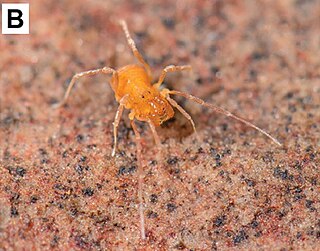
Erebomaster is a genus of armoured harvestmen in the family Travuniidae. There are at least three described species in Erebomaster.
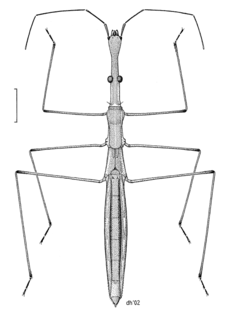
Hydrometra is a genus of water measurers in the family Hydrometridae. There are more than 120 described species in Hydrometra.
Macrohydnobius is a genus of round fungus beetles in the family Leiodidae. There are about six described species in Macrohydnobius.
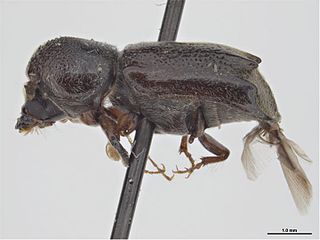
Dendrobiella is a genus of horned powder-post beetles in the family Bostrichidae. There are about seven described species in Dendrobiella.
Cornuplura is a genus of cicadas in the family Cicadidae. There are at least three described species in Cornuplura.

Metasiro sassafrasensis is a species of mite harvestman in the family Neogoveidae. It is found in North America.
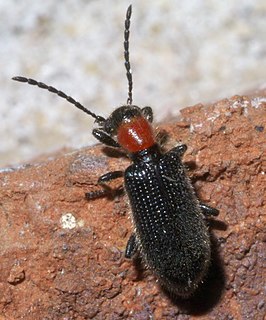
Cymatoderella is a genus of checkered beetles in the family Cleridae. There are at least three described species in Cymatoderella.

Porcinolus is a genus of pill beetles in the family Byrrhidae. There are at least three described species in Porcinolus.
Beameria is a genus of cicadas in the family Cicadidae. There are at least three described species in Beameria.
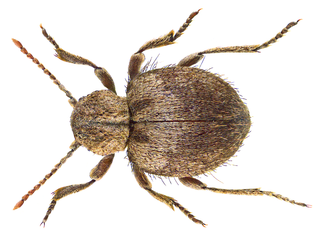
Trigonogenius is a genus of spider beetles in the family Ptinidae. There are about six described species in Trigonogenius.













